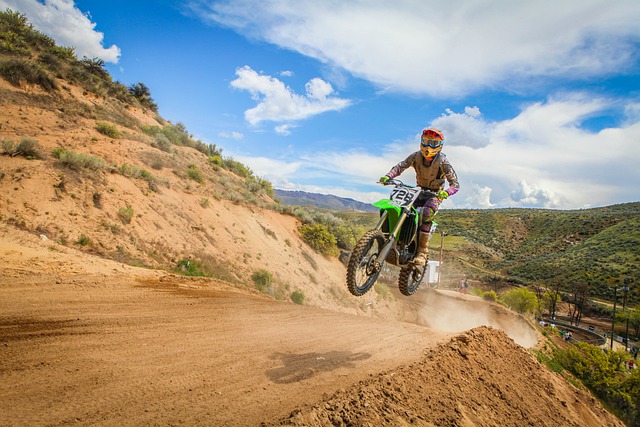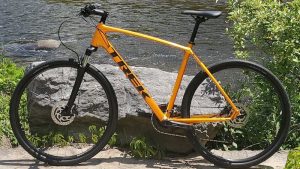In order to avoid having to own multiple bikes, are you looking for the best dirt bike for trail riding?
The best dirt bike for trail riding include: Yamaha YZ250X, Yamaha YZ250F, Yamaha TT-R230, Honda CRF250X, and…
Jump to:
For riders looking for the best dirt bike for trail riding, particularly in slower, more challenging, enduro-style terrain, we wrote this article.
In order to find out what makes the best dirt bike for trail riding, read on if you’ve ever wondered about the engine type, submodel, or dirt bike configuration.
For more information, continue reading.
Best Dirt Bike For Trail Riding
Yamaha YZ250X
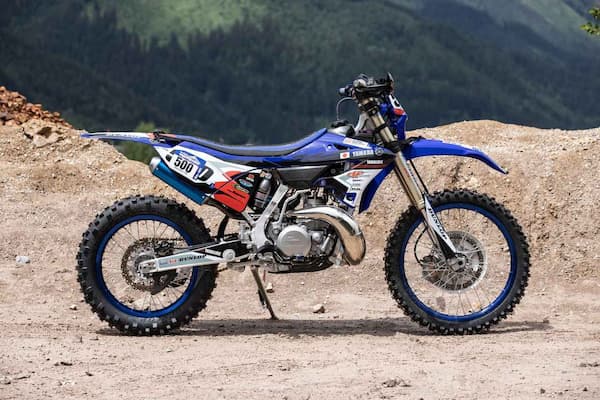
Do you remember how excited you were when you first got your first dirt bike as a teenager? The exact same sensation will be felt with the YZ250X. Yamaha specifically made sure that when riders first lay eyes on this incredible trail bike, they are overcome with awe.
And the best part about this YZ250X is that as soon as you press the throttle, it exudes both a sense of assurance and joy. It is incredibly light, bouncy, and nimble, allowing you to ride faster without pausing to think.
The amazingness of this two-stroke dirt bike is indeed beyond the scope of words. Yamaha converted their race-proven and well-liked YZ250 two-stroke motocross into an off-roader that boasts an incredibly smooth and potent engine in order to accomplish that. Additionally, to make it even more performance-focused, Yamaha’s engineers successfully decreased the compression ratio while also adding 2.1cc to the displacement.
Additionally, the power valve’s shape and the exhaust port’s height have been adjusted. In addition, the Yamaha power valve system (YPVS) now has a much wider range of fully closed to fully open positions that correspond to the RPM range, enabling a more linear power delivery.
To avoid any damage while riding in the trail, the exhaust pipe is now much narrower despite having the same volume as the YZ250. In terms of the transmission, the YZ250X has a five-speed gearbox with a wider ratio than the YZ250.
Speaking of the suspension, the YZ250X has an upside-down KYB® Speed-Sensitive System fork that is fully adjustable and has a 11.8-inch front travel range. It has a single KYB® shock with 12.4 inches of travel that is fully adjustable in the back. The KYB® suspension is also identical to the YZ250, down to the spring rates, but the compression has been slightly softer for a more comfortable ride on the trail.
A side stand, a ring chain final drive, a fuel petcock, an 18-inch rear wheel, and a 21-inch front wheel with Dunlop® Geomax AT81F tires are a few additional off-road features that you might find helpful while trail riding. With these features, riding is much more comfortable and the rider has lots of power.
Additionally, it revs incredibly widely, which makes sloping climbs on straight stretches an absolute delight. Furthermore, the responsive engine starts up with just a quick press of the clutch whenever you need a boost of power.
On this bike, even lifting the front wheel—which, to be honest, is frequently necessary on the trails—is fairly simple.
But keep in mind that the YZ250X isn’t an entirely functional off-road bike when compared to a large 450cc 4-stroke. It is a slightly modified trail bike that was derived from the YZ250 motocross and performs admirably in nearly all off-road circumstances thanks to its potent 2-stroke engine.
Yamaha YZ250F
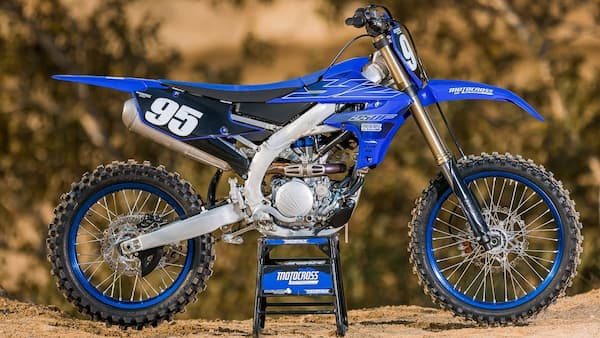
The best four-stroke dirt bike for off-road riding is without a doubt this Yamaha model from 2001. It has a 250cc, 4-valve, 4-stroke engine that performs admirably on testing dirt trails.
Due to a fully aluminum frame being introduced in the 2006 update, this bike is incredibly light, which is one of its amazing features. In essence, the Yamaha YZ250F combines an extremely light weight with a potent 4-stroke engine.
The YZ250F has a fuel capacity of 2 gallons (7,57 litres), so you can be sure you’ll have enough for a difficult dirt trail.
Due to its 38″ (94 cm) seat height and 12″ (32 cm) ground clearance, this bike will provide all types of dirt bikers with exceptional comfort. The YZ250F has KYB rear shock absorption and XC racing tires to further increase comfort.
This is without a doubt the best Yamaha dirt bike for trail riding because it combines comfort and high power.
Yamaha TT-R230
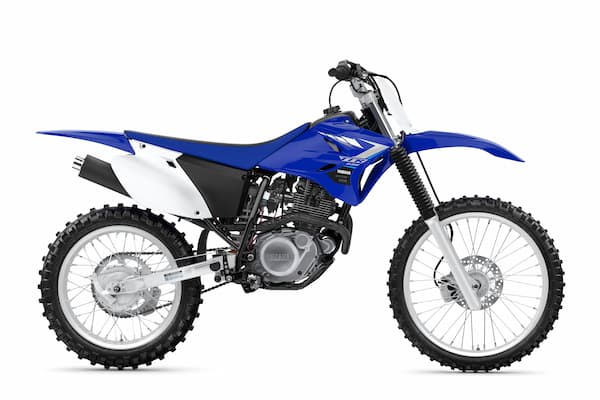
The best entry-level trail dirt bike is without a doubt this all-arounder. The bike is straightforward, lightweight, and low maintenance.
An entry-level dirt bike rider will have more than enough power from the TT-R230’s 223cc, 2-valve, 4-stroke, SOHC engine. Even though it has a six-speed transmission, you’ll hardly ever need to shift up past fifth gear. Additionally, it has an electric start, which makes starting it quite simple—even in cold weather.
Its design is another element that makes it beginner-friendly. In particular for short riders, the seat height is low enough for beginners to touch the ground.
Although it is milder than some 250cc or 450cc dirt bikes, it still produces more than enough power for a beginner. The Yamaha TT-R230 dirt bike is among the most awesome for beginners!
Honda CRF250X
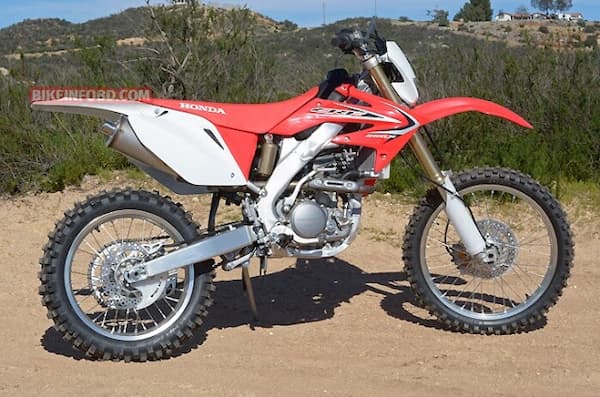
The majority of dirt bikers fall into the category of intermediate riders. The Honda CRF250X is without a doubt the best dirt bike for trail riding if you find yourself in such a segment. It has a fantastic four-stroke, air-cooled, 250cc engine with 28 horsepower at 12,000 rpm. That will keep you zooming along the narrow dirt trails.
Given that it has a steel twin-tube frame, dual-piston front brakes, and a single piston in the back, the CRF250X is without a doubt the best dirt trail bike for a heavy rider.
Powered by a vintage Keihin 37mm carburettor, this vintage dirt bike has a traditional non-electronic fueling system. Despite this, it still offers sufficient stability to be a highly dependable dirt bike.
We also want to point out that the Honda CRF250X has a larger engine, which makes it the best dirt trail bike for a tall rider. The CRF250X is your best option if you’re an experienced dirt biker seeking an old-school powerhouse.
Honda CRF110F
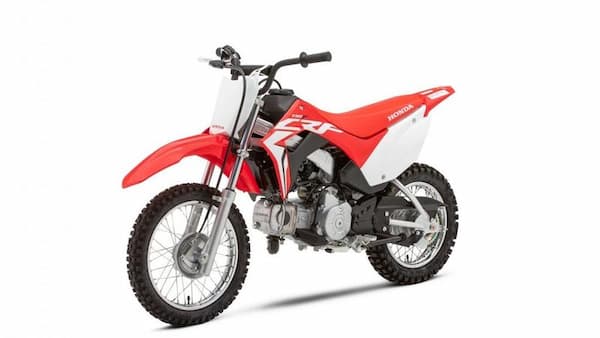
For your adolescent daughter or son, have you been searching for an off-road motorcycle that packs a punch? Honda CRF110F is the only option.
- 4 stroke engine
- Fuel injection
- Electric starting
- Telescopic front suspension
- Drum front and rear brakes
This entry-level model has electric starting for rapid takeoffs, a wider powerband, and big-bike styling modeled after the company’s CRF racing bikes. With a four-speed transmission with an automatic clutch, this bike is designed with beginning riders in mind. It also has a low seat height and a small frame.
An air-cooled, single-cylinder, 110cc four-stroke engine with excellent durability and dependability powers the motorcycle. It has been tuned to deliver the power that beginners to off-road riding require. Beginners benefit from the wide powerband, and you can limit power to match your child’s or daughter’s skill level with the throttle adjustment feature. Better suspension travel is provided by a smooth telescopic front fork, allowing for surefooted control over challenging hills.
But the truth is that this motorcycle has a tendency to weigh more than it should.
Suzuki RM-Z250
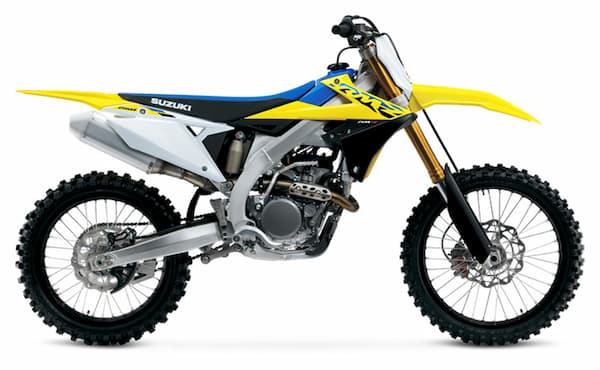
Suzuki’s RM-Z250 is a decent option if you’re looking for a well-balanced dirt bike for trail riding. Its 250cc, 4-stroke engine offers adequate power for such a well-balanced dirt bike.
This dirt bike has undergone numerous updates for improved comfort and performance over time. The frame and swingarm of the bike are made of aluminum to lighten its overall weight. In order to further reduce the weight of the bike and increase stability on the dirt trail, a hollow square is added inside.
The general appearance of this Suzuki dirt bike is yet another aspect that we adore greatly. The design highlights the bike’s easy weight distribution on its front and rear sides. In addition to this, the rider has the most control possible thanks to the design of the wheels, tires, and brakes.
Does this qualify as the best motocross bike for off-road use? It’s possible, given that the RM-Z250’s design prioritizes stability and control.
Suzuki RM-Z450
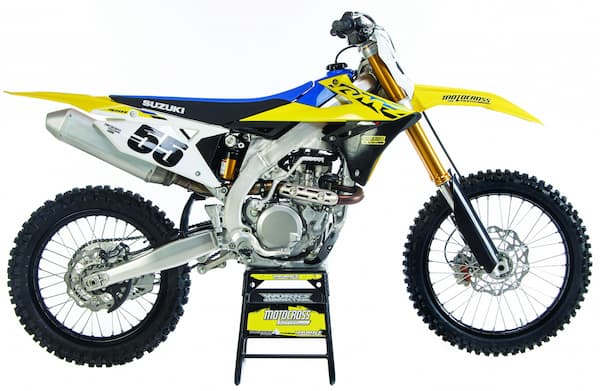
Suzuki’s RM-Z450 fits the bill if you’re looking for a dirt bike with high cornering performance on those challenging off-road turns.
- Liquid-cooled, DOHC engine
- Showa front and rear suspension
- 5-speed transmission
- Nissin caliper front and rear brakes
- Primary kick launcher
A new generation liquid-cooled, DOHC engine with more low-end torque and superior peak power is featured in the RM-Z450. It also has an easy-to-control throttle response. To improve engine output, the cylinder head has been redesigned to smooth out the surface. An under-mount injector is included in the throttle body’s creative design for better atomization.
It has front and rear suspension systems from Showa that are both highly advanced and ensure excellent traction and responsiveness. The improved suspension performance increases the bike’s capacity to absorb shock for better comfort and chassis stability.
This model’s stiffer rider, which might not be the best choice for a beginner, is what I find a little disappointing.
Kawasaki KX250
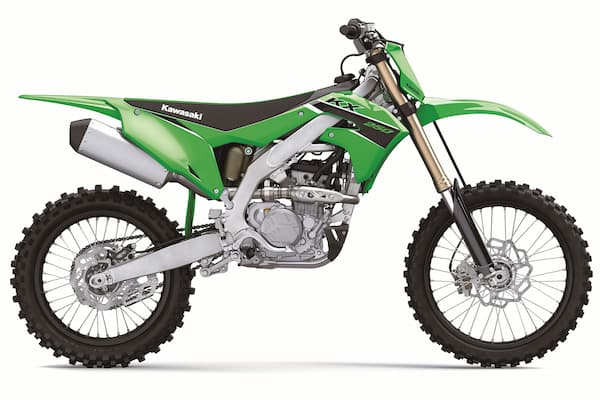
Last but not least, we have this fantastic performance from the lightweight Kawasaki, which has excellent power and stability to support it. Additionally, it received some beneficial upgrades for the 2020 model, making it one of the best dirt bikes for off-road riding.
First off, the KX250 has a 249cc, 4-stroke, liquid-cooled engine. Even for the trickier dirt trails, it delivers adequate performance. The engine’s high performance is complemented by the brake system’s high effectiveness. In order to give dirt bike riders a high level of control, the braking system includes a braking petal disc, a dual-piston calliper, and pads.
Of course, if this Kawasaki dirt bike weren’t lightweight, the package wouldn’t be complete. It also doesn’t let us down in this regard, as evidenced by the bike’s light weight and superior controllability, which are further enhanced by the use of cast parts and a thin aluminum frame.
Overall, if you’re searching for a well-balanced, stylish machine, you should pay attention to this dirt bike from Kawasaki.
Kawasaki KX450X
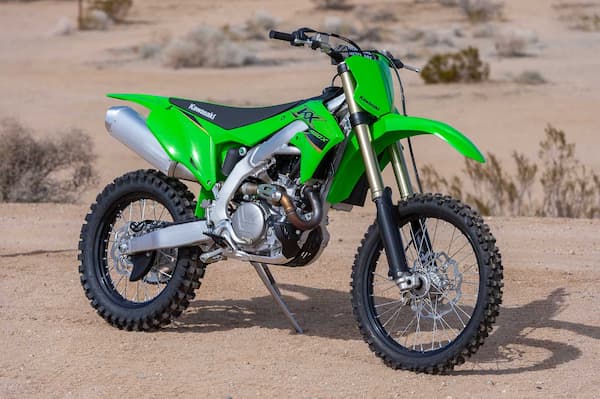
There is no denying that winning is in the blood of the KX series of Kawasaki motorcycles. And if you are familiar with Kawasaki’s KX450 motocross model, the KX450X is actually not that dissimilar. But Kawasaki went above and beyond to make this model capable of being used off-road.
In fact, the KX450X has the following very basic goals: to ace in cross-country racing. In actuality, the KX450X has so far been a significant asset for Kawasaki and has established itself as a champion in cross-country competitions.
Additionally, it is a lot more forgiving bike when it comes to overcoming various trail obstacles, making it perfect for both recreational and serious trail riders.
A 21-inch front wheel and an 18-inch rear wheel with Dunlop Geomax AT81 tires are what the bike comes with. Regarding the suspension, you get a Uni-Trak® gas charged shock at the back and a 49mm inverted telescopic coil-spring fork up front with 16-way compression damping and 16-way rebound damping.
In order to better support the rider in off-road conditions, the suspension settings have been purposefully made softer and the spring rates at the front and rear have been reduced.
Another distinguishing feature of this motorcycle is that its 449cc DOHC single-stroke liquid-cooled engine is virtually identical to its motocross counterpart. Only a slightly smoother power characteristic, the use of an O-ring chain, and a slightly different gearbox (with 51 teeth in the rear sprocket instead of 50) distinguish these two models.
Although this bike has a standard five-speed wet multi-disc manual clutch and hydraulic clutch actuation, the transmission ratio is the same as the motocross model. Overall, it definitely has the KX450’s feel, but once you start riding the trails, you will be able to tell the difference.
Performance-wise, the bike is identical to the motocross model in terms of couplers, internal mapping, and clutch, but the motocross model has a clutch that is a little bit more aggressive in color—green—while this bike has a clutch that is a more subdued black. However, if you would rather a coupler in white, that option is also available.
Additionally, the rear rotor size is comparable to that of the 250cc motocross and 250cc off-road models. Additionally, the adjustable triple clamps, handlebar settings, and adjustable peg positions are similar to those seen in 450cc motocross models.
This bike’s ease of use for off-road riding is one of our favorite features. Additionally, despite the fact that this particular motorcycle is nothing special, it is always stable and comfortable to ride, regardless of the surface you are on.
Additionally, due to the abundance of adjustment options, this bike is easily rideable by riders between the heights of 5’3″ and 6’4″.
Husqvarna TC 250
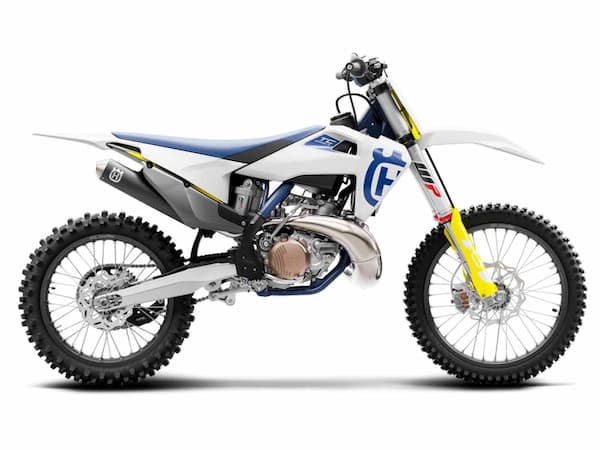
You shouldn’t look past the TC 250 from Husqvarna if you want cutting-edge ergonomics and the most modern two-stroke motocross engine.
- 2 stroke engine
- Magura hydraulic unit
- Foot-operated launcher
- Disc front and rear brakes
- Pro taper handlebar
New air seals, rebound springs, air pistons, and dampening side pistons have all been added to the forks. The valving on the WP XACT rear shock has been altered to better match the Rev up front, and the compression dampening has been firmed up in the mid-stroke.
Husqvarna has redesigned the radiator guards to significantly lessen the amount of trapped dirt on the bottom of the guard. The carburetor is positioned at an angle to help keep the fuel in a proper pickup position. This model has a remarkable low-to-mid blistering abrupt powerband that produces amazing full horsepower at the right RPM. Its two-stroke engine is the most adjustable ever created.
The nearly maintenance-free Magura hydraulic clutch is another advantageous feature worth mentioning. It permits superior modulation and even wear under all circumstances.
The problem is that this model might not be able to produce more powerful horsepower at higher RPM.
KTM 150 SX
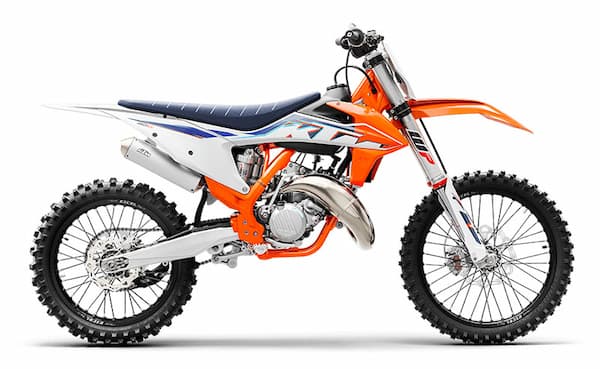
Consider the KTM 150 SX if you’ve been looking for the best dirt bike with a lightweight, dynamic chassis.
It has a small two-stroke engine with the best power and torque available. This engine screams high performance on the roughest tracks from every angle.
A 48-millimeter fork with a 12.2-inch travel is equipped with the front suspension and is fully adjustable. With 11.8 inches of travel, the rear suspension is also completely adjustable. When these two characteristics are combined, there is better traction for cornering and braking. They make riding downhill much faster. On the other hand, the six-gear transmission helps the engine maintain power longer.
With a primary gear and a one-piece outer hub for unbeatable reliability, the clutch system was creatively designed. Due to the clutch plates’ exceptional heat resistance, clutch disengagement is reliable.
I don’t like this model because the gears are too tall, and the springs are too soft for my weight.
KTM 250 SX-F
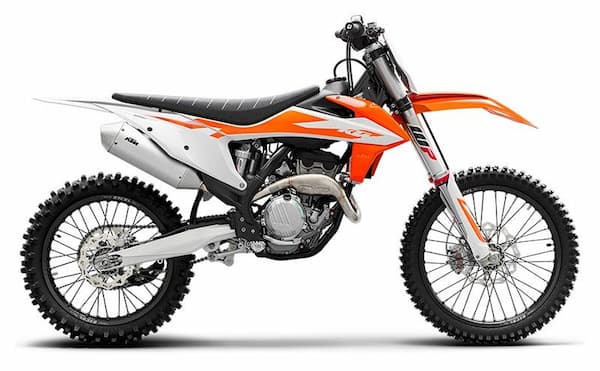
For the best trail bike of the year, the brand-new KTM 250SX-F comes out on top. primarily due to an upgraded frame, engine, and suspension in the most recent model.
And as we are all aware, the stiffness of the frame used to be a major source of complaints. To better meet the needs of the rider, KTM has enhanced and altered the frame.
Additionally, the updated frame is now matched with the fresh body style to provide riders with more comfort and a more ergonomic riding experience.
In an effort to centralize its mass without compromising performance, KTM has also tipped the engine back by 2 degrees. Additionally, the anti-squat behavior of the chassis has been significantly improved by combining the advantages of mass centralization with a generally lighter frame.
The 250SX-F, which has an entirely new compression ratio, not only revs higher than any previous KTM models but also produces respectable low-end power. WP XACT-USD forks and WP XACT Monoshock, which both offer unparalleled consistency on every lap, are additionally included. No matter how quickly you are moving, the SKF linkage seals guarantee unmatched traction as well as impact absorption.
And that’s not all—these new forks have air and oil bypasses to prevent excessive pressure buildup during longer rides. The forks are made much plusher and operate more like spring forks thanks to the additional air and oil bypasses. Additionally, this air fork is the best one on the market right now from the perspective of the consumer.
The map select switch is another new feature that was added this year. It has a straightforward design that makes it easier to use to switch between 2 engine maps. Thus, Map 1 gives you a more linear curve, whereas Map 2 gives you a more aggressive throttle response and a ton of torque to power through the corners.
Unexpectedly, the 250SX-F also has a Quickshifter that enables upshifting without using the clutch. Therefore, you can change from second to fifth gear without losing concentration.
Additionally, beginner or intermediate riders will find it to be incredibly comfortable and simple to ride right away.
Due to the geometry of the frame and the shock absorbers, you have approximately 13.5 inches of ground clearance, which is equally crucial for trail riding. Optimized footpegs that are less prone to ruts serve as a complement to this. You are unstoppable, in other words!
Overall, the KTM 250SX-F offers a package that is genuinely rider-friendly and capable of handling any obstacle.
Can You Ride Trails On A 450?
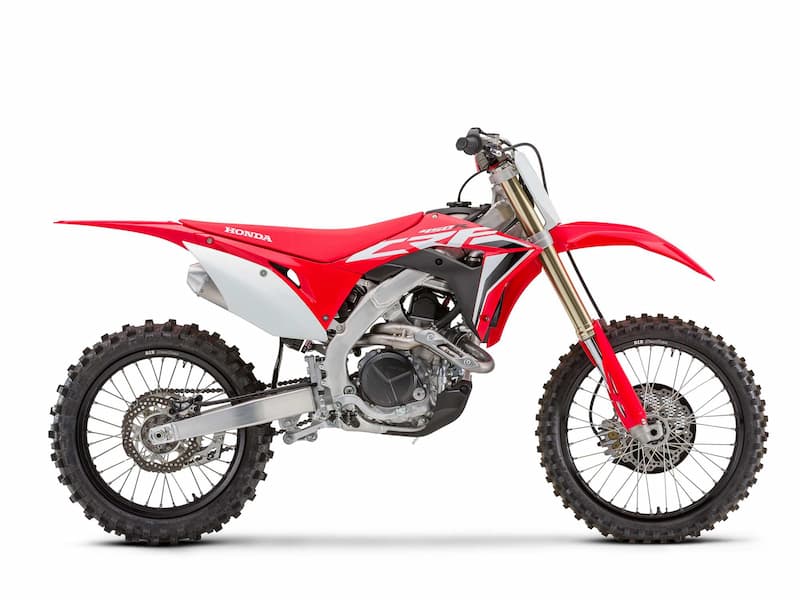
For a variety of reasons, I don’t advise the majority of people to purchase a 450 dirt bike for trail riding. Unless you are over 300 lbs, they simply have way more power than you require.
In the woods or on narrow trails, a 450 also feels heavier, hastening your weariness. On the track, it’s a little easier to control, but if you’re tired and can’t keep it under control, trouble can come much faster.
If you’re a bigger, more experienced rider who can handle or needs the extra torque and horsepower, a 450 might be a good choice for trail riding. It might be the best option for you if you like to ride in the open desert or on sand dunes. See more about Best Dirt Bike Brands
When Riding Trails, Are Motocross Bikes Suitable?
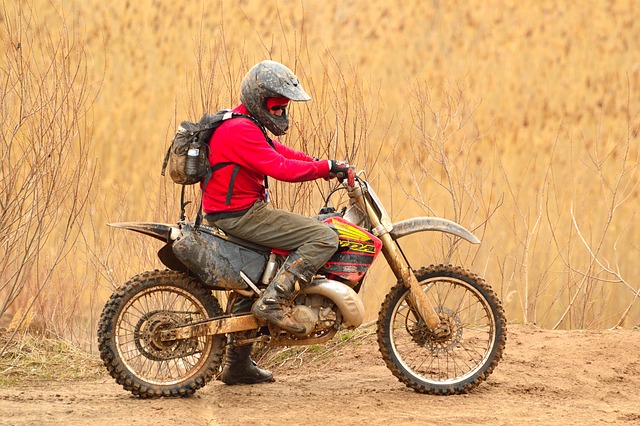
The worst kind of dirt bike for off-road riding is the motocross model. Why? Because of a number of factors that make them more difficult or less fun to ride off-road.
For instance, motocross bikes are not as suitable for trail riding due to factors like stiff suspension, abrupt power curve, close-ratio gearing, lack of kickstand, and absence of electric start (on older MX bikes).
Having said that, it is still enjoyable to ride a motocross bike on trails. In fact, if you’re an experienced and aggressive rider, a 250F moto bike might be the most fun on swift and flowing trails because you can hammer it hard.
Nevertheless, if you intend to ride trails a lot, I strongly advise getting an actual trail bike or enduro bike.
Are You Prepared To Ride A Trail?
Perhaps you’re still learning to ride; in that case, I strongly advise you to avoid all tracks.
You need to learn the basic techniques of riding off-road so that you properly use your body to stay in control. Even if you have experience riding a street or mountain bike, a dirt bike is very different and necessitates particular skills.
It’s time to ride some easy dirt bike trails to continue boosting your confidence once you feel at ease and secure riding in a wide open space or on open trails.
Choose The Best Trail Bike
Although all dirt bikes are designed to be high-jump champions, not all of them are equally effective on the racetrack. I urge you to think about the following factors when searching for the best dirt bike available on the market:
Types Of Dirt Bikes
If you haven’t chosen where and how you’ll use your dirt bike, you can’t just run out and buy the first one you see. Off-road motorcycles are primarily used for four purposes, which are as follows:
Trail Dirt Bikes
These motocross races are made to rule the off-road trails. They offer state-of-the-art performance with agile handling, a wide ratio gearbox, long transmission travel, and light chassis. They can pass through thick vegetation, bushes, muddy ground, and even small tracks. You can also take trail dirt bikes on a dirt bike camping trip.
Competition Dirt Bikes
Long or short races are both open to riders. Long races are only for experts and more seasoned riders, while short races are popular among riders of all skill levels. Riders can compete on motocross or supercross motorcycles.
The most popular racing options are motocross and supercross. Off-road motorcycles used in competition are built to perform. On the track and in the air, they are lighter, quicker, and sharper. No matter how many turns the track has, motocross and supercross are designed to handle them with ease. They include some of the most cutting-edge hydraulic systems without clutch fading or adjustment issues.
Adventure Dirt Bikes
Look for this kind of motocross bike if you want some adventure on a tight budget or just a capable off-road motorcycle for some fun. To safeguard that weak engine, they typically have well-considered styling and a bash plate. The most modern amenities and technologies are found on these motorcycles. Some expensive models come equipped with a multi-information display that includes a simulator.
Dual-sport Dirt Bikes
Dual-sport motorcycles should be your first choice if you intend to use your vehicle both on and off-road. Even though they frequently have off-road riding features, they are typically street legal.
Because of this, they are more athletic on dirt trails than other motocross bikes. They have tires that have excellent traction, which means they can grip rough or muddy surfaces. Long-travel suspensions found on dual-sport vehicles protect riders from harsh bumps. Dual-sport dirt bikes are known for their excellent handling both on and off the track, and they are lightweight like other dirt bikes. They are fantastic options for intermediate or new riders.
When you go for a ride, make sure you are wearing the proper safety gear, including a suit, gloves, and a dirt bike helmet.
Two-stroke Vs. Four-stroke Engines
The terms “two-stroke” and “four-stroke” are frequently used in relation to dirt biking.
Off-road bikers with experience understand what I mean, but novice riders still have a lot to learn before they can decide which of the two is best for them. The likelihood that a motorcycle is four-stroke increases with engine size. As a result, the two-stroke models, which are typically lightweight, are the default for smaller engine bikes.
The primary distinction is that a 2-stroke engine’s cylinder fires each time the piston oscillates once up and down. On the other hand, a four-stroke engine requires the piston to move up and down twice in order to generate power. This comparison shows that a two-stroke engine can produce more power with a cylinder that is the same size. Maintenance raises questions. Due to their propensity for operating at higher temperatures, two-stroke models need more maintenance.
With 4-stroke engines, the oil is poured directly into the crankcase through an oil fill opening. However, the majority of 2-stroke engines demand that you manually combine the gas and the two-stroke engine oil before starting the engine. If you don’t get the mixing ratio right, it can have a negative effect on the engine’s performance.
Compared to two-stroke models, which frequently produce smoky performance, four-stroke dirt bikes have cleaner emissions and better fuel efficiency. Typically, when the oil to gas ratio is off, the emissions are worse.
Performance & Controllability
The suspension and transmission are two features that contribute to the best trail bikes’ performance.
Suspension
If a dirt bike’s suspensions aren’t the best in the business, it won’t be able to live up to its reputation. A suspension is a set of springs and shock absorbers that softens the up and down motions. The perfect suspension would include:
Maximum traction
Consistency
Controlled bottoming
Minimal harshness
Typically, sprung and unsprung mass are related to the suspension of a dirt bike. The term “sprung mass” in this context refers to the mass above the spring, which includes the rider, engine, seat, tank, and frame.
The mass that moves up and down with the wheel, on the other hand, is referred to as the unsprung mass. This mass includes components of the swingarm, brake caliper, lower slider, axles, and wheels. In a perfect world, the sprung mass travels in a straight line while the unsprung mass oscillates up and down.
Long-travel suspension is a must for the best trail bicycles. The amount of suspension travel used directly affects the velocity of the rebound stroke. More energy is stored in the spring and more force is needed to extend the fork the further the fork has been extended.
Simply put, this means that smaller displacements will generate a low-speed rebound damping and vice versa. Whether or not the tire is in contact with the track or the motocross is in the air will also affect the precise velocity.
Transmission
The term “transmission” describes the internal gears of a dirt bike that control how much of the engine’s power is required to turn the rear wheel. A tiny lever by your left foot is used to change the gears. The motocross accelerates quickly in lower gears but typically has a low top speed.
The bike accelerates gradually but quickly in higher gears. To maintain the best acceleration and speed for the trail, you shift gears. Either a five-speed or a six-speed transmission is typically found on the best trail bikes. There is a six-speed improvement in torque transfer efficiency when comparing the two gear ratios. In comparison to a five-speed transmission, the torque capability is nearly 30% higher. This is a result of the wider diameter gears.
Chassis
A lightweight material, such as aluminum, must be used in the construction of a dirt bike’s frame to ensure superior air control. Less than 250 pounds are typically the weight of motocross bikes. The lighter the bike, the faster it will travel and the simpler it will be to launch into the air when jumping off hills and bumps.
Which Is Better For Trail Riding: 2 Or 4 Stroke Model Bike?
There isn’t much debate about which of the two to choose. When deciding which one to select, a person should weigh a few factors and weigh their advantages and disadvantages. For instance, what kind of riding do you plan to do and will you spend more time on the trail or the sand dunes?
The 4-stroke is smoother to ride on long-distance adventures when trail riding because it is more predictable and controllable than the 2-stroke. Particularly in remote areas without nearby gas stations, this can be crucial. Additionally, riders must always carry more than enough 2-stroke oil on every trip they take.
It can become embarrassing to constantly check the oil level or shake the bike after filling it up. Furthermore, 4-stroke dirt bikes have more low end, which enables one to transport the bike and rely on its torque without fouling the spark plug. To keep the dirt bike’s plugs from fouling, you must always rev it.
Which Is Better For New Riders: 2 Or 4 Stroke Model Bike?
2-stroke dirt bikes are improving technologically. They have increased power and decreased exhaust emissions at the same time. Even though a 2-stroke won’t give you the same amount of torque as a 4-stroke, they aren’t as bad for weekend riders and novices. Additionally, 2-stroke dirt bikes are generally lighter and simpler to handle than 4-stroke models, making them even better for beginners.
In order for older 2-stroke bikes to rev and produce more power, one was required. Going around tight corners on a track through the woods is not ideal. Two-strokes are suitable for trails because modern power-valve systems and exhaust ports make it simple to ride at lower rpms. Additionally, compared to 4-stroke bikes, 2-stroke bikes require less maintenance, saving time and money for novice riders.
Dirt Bike VS Trail Bike
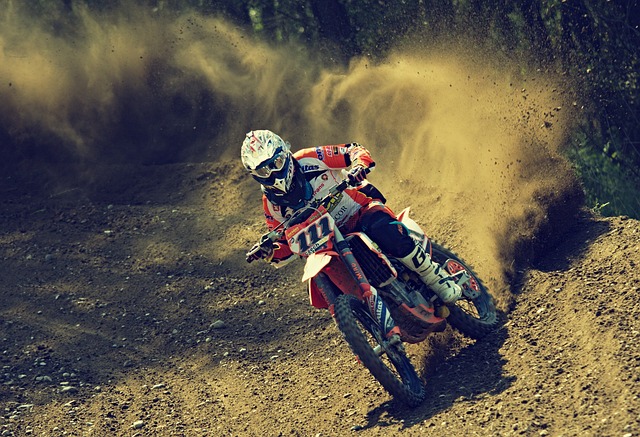
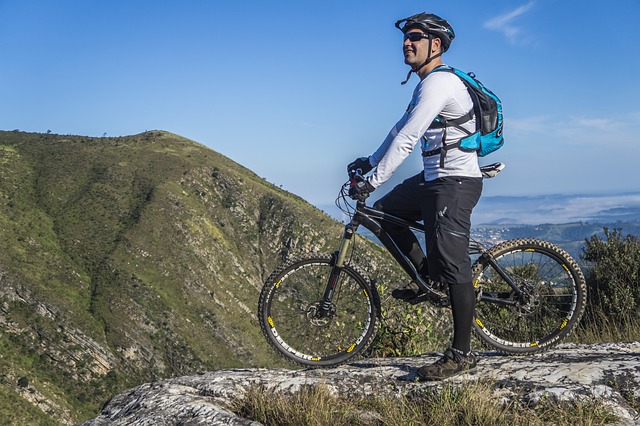
A dirt bike known as a “trail bike” is designed exclusively for riding on trails. The suspension is typically softer, and the ride is generally easy thanks to the smooth engine.
A trail bike can also differ in that it has an 18″ rear wheel (allowing for larger knobbies and sidewall), a larger gas tank, and armor (hand guards, skid plate, etc.).), a wider ratio transmission to make each gear more usable, a different exhaust that’s quieter with a spark arrestor, a kickstand, as well as a head and tail light on some models.
Because they are more comfortable and convenient to ride off-road, they are far superior to motocross bikes for trail riding. Except for ardent racers, the additional accessories are worth the weight.
Frequently Asked Questions
Is a YZ250 Good for Trails?
The YZ’s more aggressive power characteristics and evenly spaced transmission are preferred by our riders. The YZX has a wide-ratio tranny which is good for desert riding and trail riding, but the standard moto transmission is our preferred choice for GP racing on the West Coast.
Why Do Pros Ride 4 Strokes?
Four-strokes make massive power and torque given their relatively small engines. A skilled rider on a 4-stroke dirt bike can execute a challenging triple jump with just a 10-foot runup. To accomplish that feat, you need a 4-stroke dirt bike’s stump-pulling torque in addition to skill.
Why is a 2 Stroke Better for Trail Riding?
2 stroke dirt bikes that are designed for trail riding have some distinct advantages. They’re a little bit lighter and handle better in tight and technical trails. They also do not typically overheat as quickly as a four-stroke.
The Bottom Line
The quickest way to improve as a rider, whether you’re an experienced rider returning to the sport or just getting back into it, is to learn the right techniques. In order to prevent you from making the common mistakes that lead to falls and more easily sustained injuries, I’d like to give you something for free.
Thank you so much for reading.

